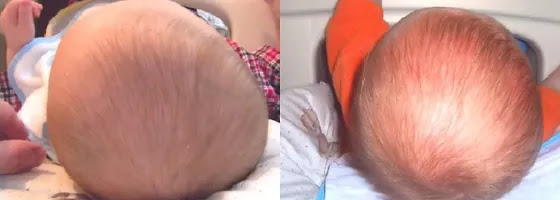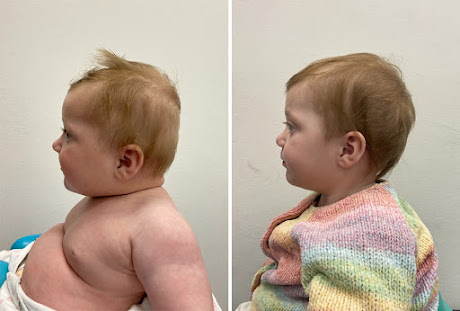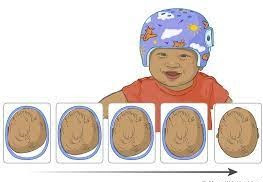Infant Misshapen Baby Heads Deformation Treatment
Fortunately, there are effective
treatments available for Flat Head Treatment and addressing infant
skull deformities. One of the primary approaches is repositioning, encouraging
parents to change their baby's head position regularly while awake and during
sleep. This simple yet crucial practice can significantly alleviate the
pressure on the affected area, allowing the baby's head to naturally reshape
over time. Additionally, incorporating tummy time into the daily routine is
highly beneficial. Tummy time helps strengthen the baby's neck and shoulder
muscles while preventing prolonged pressure on the back of the head.
In cases where flat head syndrome persists or worsens, seeking
professional guidance becomes essential. Pediatricians and specialists can
recommend specific exercises and techniques to encourage natural head movement.
Plagiocephaly Treatment might also involve
the use of specialized pillows and positioning devices. These products are
designed to support the baby's head, redistributing pressure evenly and
promoting a more symmetrical shape. It's important for parents to consult
healthcare providers before using any of these products to ensure they are safe
and suitable for their baby's age and condition.
Moreover, advancements in medical technology have led to the development
of cranial orthotic helmets for Infant Skull Deformity Treatment. These helmets,
custom-made to fit the baby's head comfortably, provide gentle, consistent
pressure on the flat spots, encouraging the skull to grow in a more rounded
shape. Helmet therapy is most effective when started early, typically between 4
to 12 months of age when the baby's skull is still growing rapidly. Under the
guidance of healthcare professionals, parents can find reassurance in the
effectiveness and safety of these helmets, which have shown remarkable results
in correcting skull deformities.
It's important for parents to remember that they are not alone in this journey. Healthcare providers, pediatricians, and specialists are valuable resources, offering guidance, reassurance, and expert advice. Addressing flat head syndrome and infant skull deformities requires patience, consistency, and the support of a qualified healthcare team. By taking proactive measures and seeking timely treatment, parents can help ensure their little one's head shape develops naturally, allowing them to focus on the joyous moments of infancy, knowing that they have taken the necessary steps to promote their child's health and well-being.




Comments
Post a Comment